Last updated on October 23, 2023 to reflect the latest research and statistics. Our editorial team has ensured you’re viewing the most current data on this topic. Need help or have a question? Email us.
There is a lot of us. As of January 1, 2023, there are 7,942,645,086 people on Earth. That’s an increase of 0.94% over last year. Two of us take our last breath every second, while four babies take their first. We also eat a lot!
Before factory farming took over the agricultural forum and how people grow food, husbandry was a way of life for families. Surprisingly, farming is a relatively new invention and only about 10,000 to 12,000 years old.
Factory farming is in its infancy, yet it’s as vicious as a treacherous landslide engulfing farmland worldwide.
Factory farming or CAFO (concentrated animal feeding operations) engulfs pigs, beef and dairy cows, chickens, sheep, fowl, salmon, and fish (aquaculture). It also includes grains and vegetable farming and pollutes the environment.
Factory-farmed animals experience no kindness. It’s a new level of animal cruelty as we harvest billions and churn out factory farm animals like factory-machined goods without any thought about their well-being.
Top 10 Most Shocking Facts
- 80% of the Pork Meat We Consume Is Infected With Pneumonia
- Dairy Cow Produce Almost 24,000 lbs of Milk Annually
- Today, Chicken Contains 220% More Fat Than Chicken Farmed in the 1950s
- Birthing Sows Are Confined in Metal Cages While Giving Birth
- Globally, 50 Billion Farm Animals Die for Consumption
- In the USA, 99% of Farm Animals Live on Factory Farms
- Every Minute, 140,000 Chickens Are Slaughtered
- Factory Farms Pollute Over 145,000 Miles of Rivers and Waterways
- The U.K. Has Over 800 Mega Farms
- 94% of People Believe That Farm Animals Shouldn’t Suffer
General Factory Farm Statistics
The Sentience Institute currently believes that over 90% of the world’s farmed animals are housed in factory farms. This encompasses about 74% of farmed land animals (only vertebrates) and almost all farmed fish. However, the exact numbers, especially for fish farming, remain uncertain due to limited data.
They approximate that globally, there are about 31.0 billion land animals and between 38.8 to 215.9 billion fish being farmed at any moment.
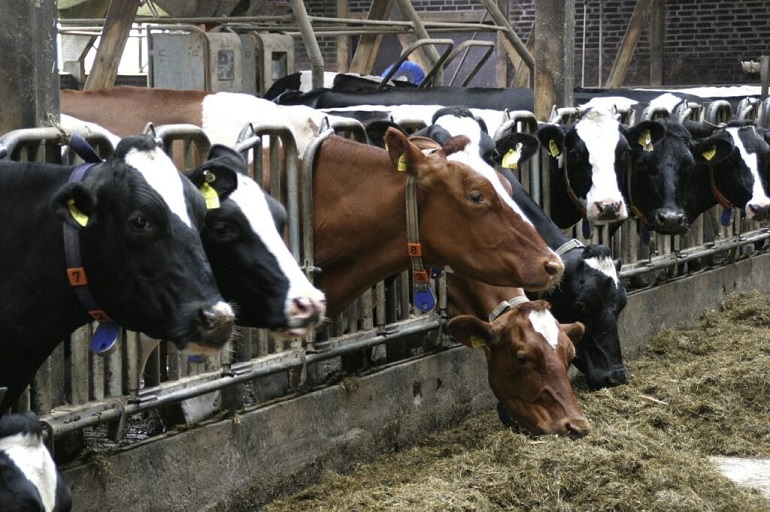
There’s no other way to say it; factory farming harms animals at a level humanity has never witnessed. According to the World Economic Forum, we consume animals by the billions. Although we don’t necessarily farm that trillions of fish, we rip them from the ocean with no concern. The estimated number is in the trillions.
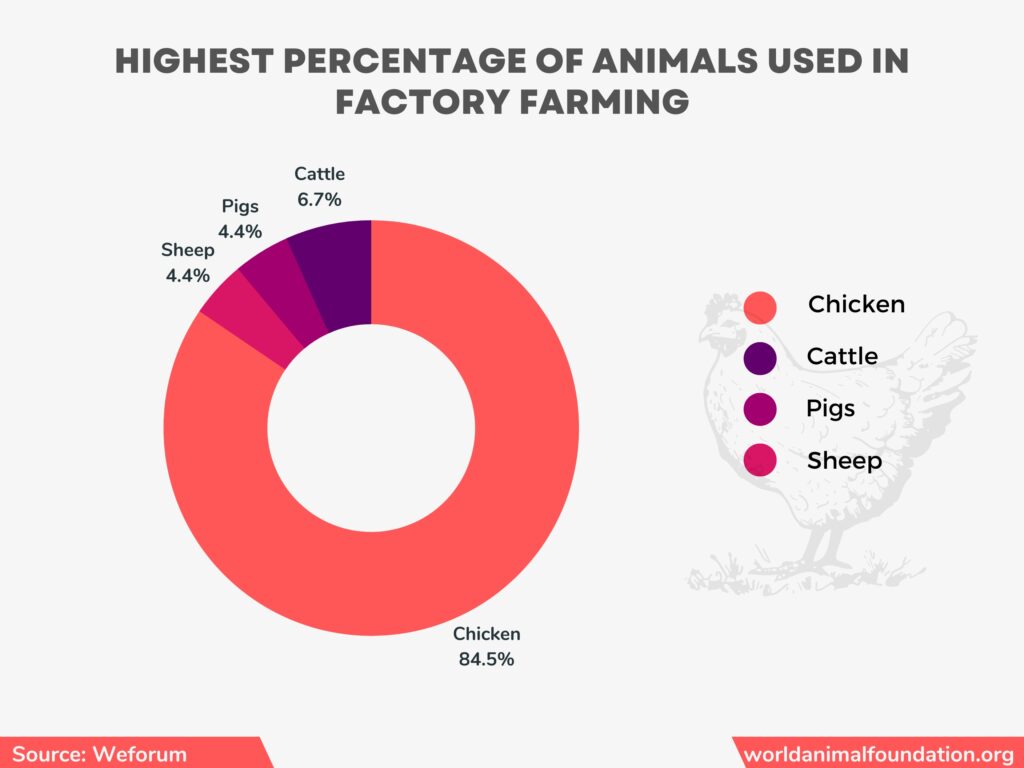
Chickens are the most used animals in factory farms due to the increase in human demand, followed by cattle.
Animals on Factory Farms Grow Three Times Faster (One Green Planet)
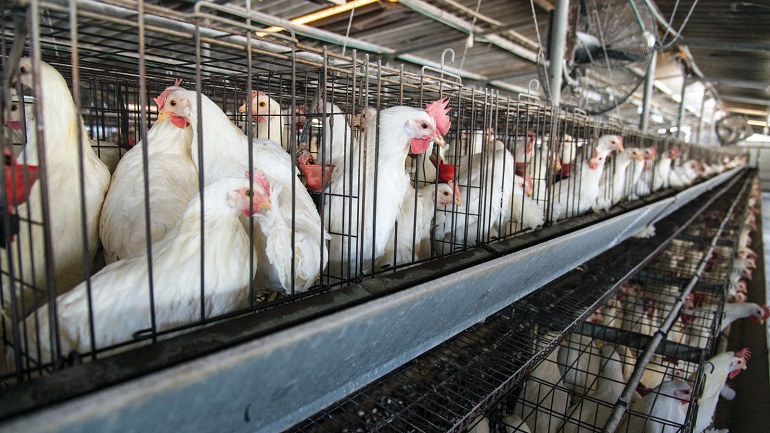
It’s really down to science. The factory farming industry engineers animals to mature faster with the help of supplemented weight-gaining animal feed.
Chickens grow for slaughter in 35 days when the healthy regular rate is 90 days. The miracle concoction also allows farmers to feed chickens less than their contemporaries from the 1950s.
During the 1950s, farmers produced one pound of meat for every three pounds of feed. Today, that miracle food does it in 1.7 lbs (we’re eating it too). The pork industry kills pigs at six months.
25,000 U.S. Factory Farms Produce Around 1.6 Billion Farm Animals (Food and Water Watch)
2017 USDA (United States Department of Agriculture) census figures revealed startling numbers. Factory farms saw an increase of 28.5 million animal farms in 2012. Some analysts suggest that approximately 250,000 factory farms in the U.S. contribute to animal agriculture on an epic scale.
Thank Earl Butz, former U.S. agriculture secretary, for dedicating his career to promoting mega farms with his ‘get big or get out’ slogan.
2019 Stats Show Factory Farms Offer Better Jobs for Farmers (ConnectUS)
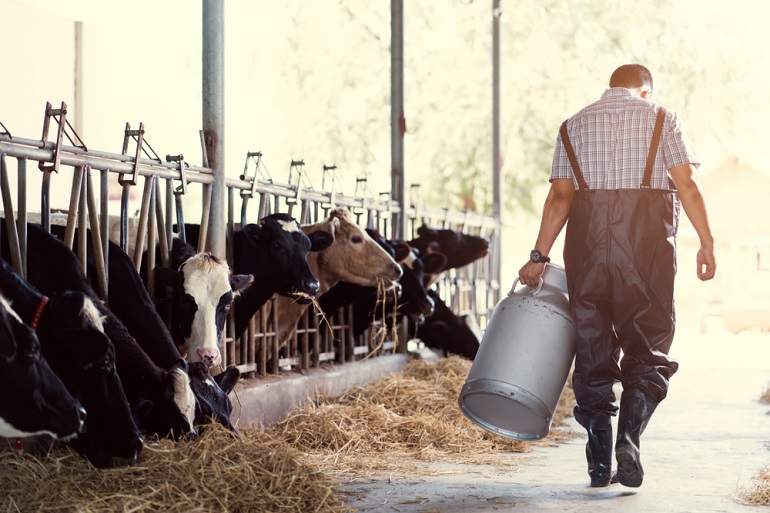
Factory farming is a business model that allows farmers to have a higher earning potential than traditional farming. Factory farming is also more lucrative for general laborers who earn $12/hr, and since factory farming relies on technology, the jobs have advanced too. Managers can make more than $18/hr.
80% of Pigs Killed for Meat Production Have Pneumonia (One Green Planet)

Did you want an antibiotic with the pork chop? We are the pigs. We house factory-farmed pigs in disgusting, inhumanely small pigpens and wonder why these poor creatures have serious health issues. Pigs inhale toxic gases from manure and ammonia and end up with untreated pneumonia before they’re hauled off to slaughter.
Approximately 70% of Cows Are Factory Farmed in the U.S. (Sentience Institute)
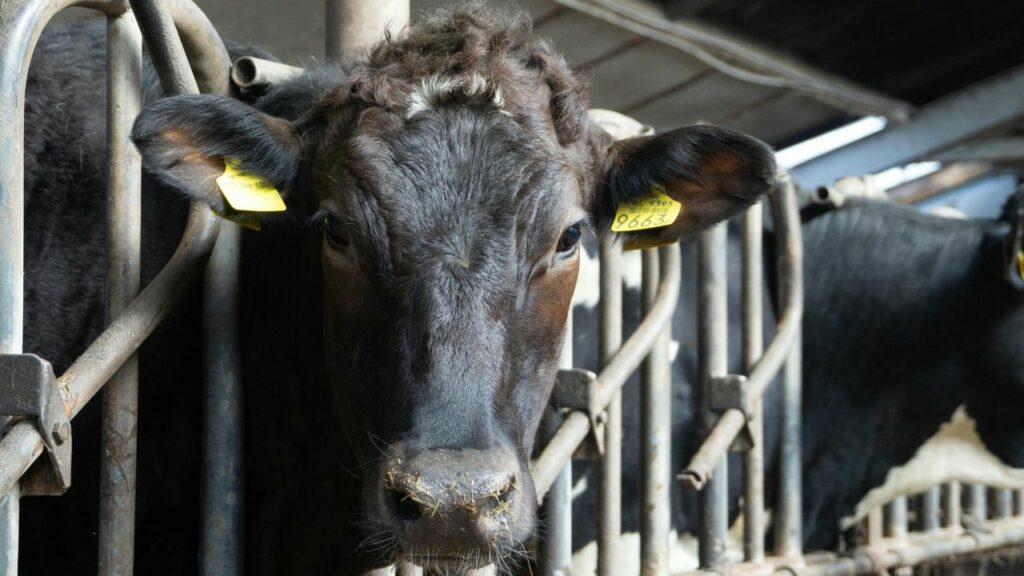
Cows might be the last free-roaming farm species since only 70.4% reside on factory farms. Most other animals, like broiler chickens, egg-laying chickens, turkeys, and pigs, are in the 98 to 99.9 percentile of factory farming.
Stats Reveal Dairy Cows Get No Time Off Between Pregnancies (Farm Sanctuary)
Our human demand for dairy products is an astronomical $163.5 billion. Therefore, reproduction is the motor that keeps the dairy machine alive.
“To have efficient or productive or profitable lactations, cows need to give birth as frequently as possible,” says Reynolds, an advisor to dairy farms. And that sums up the life of a dairy cow.
Further, your North American milk is full of hormones because if a cow isn’t pregnant, a vet will surely inject her with hormones to make her pregnant again.
As Per USDA Report of 2022, Each Dairy Cow Produce Almost 24,000 lbs of Milk Annually (USDA)
One of the biggest complaints from dairy cows is that they didn’t sign up for a life of constant pregnancy and milk production. Even though one dairy cow produces about 24,000 lbs (over 2000 gallons) of milk yearly, she gets no compensation.
Cows suffer from mastitis and painful conditions from being hooked to milking apparatuses. Here is a global representation of milk consumption per capita.
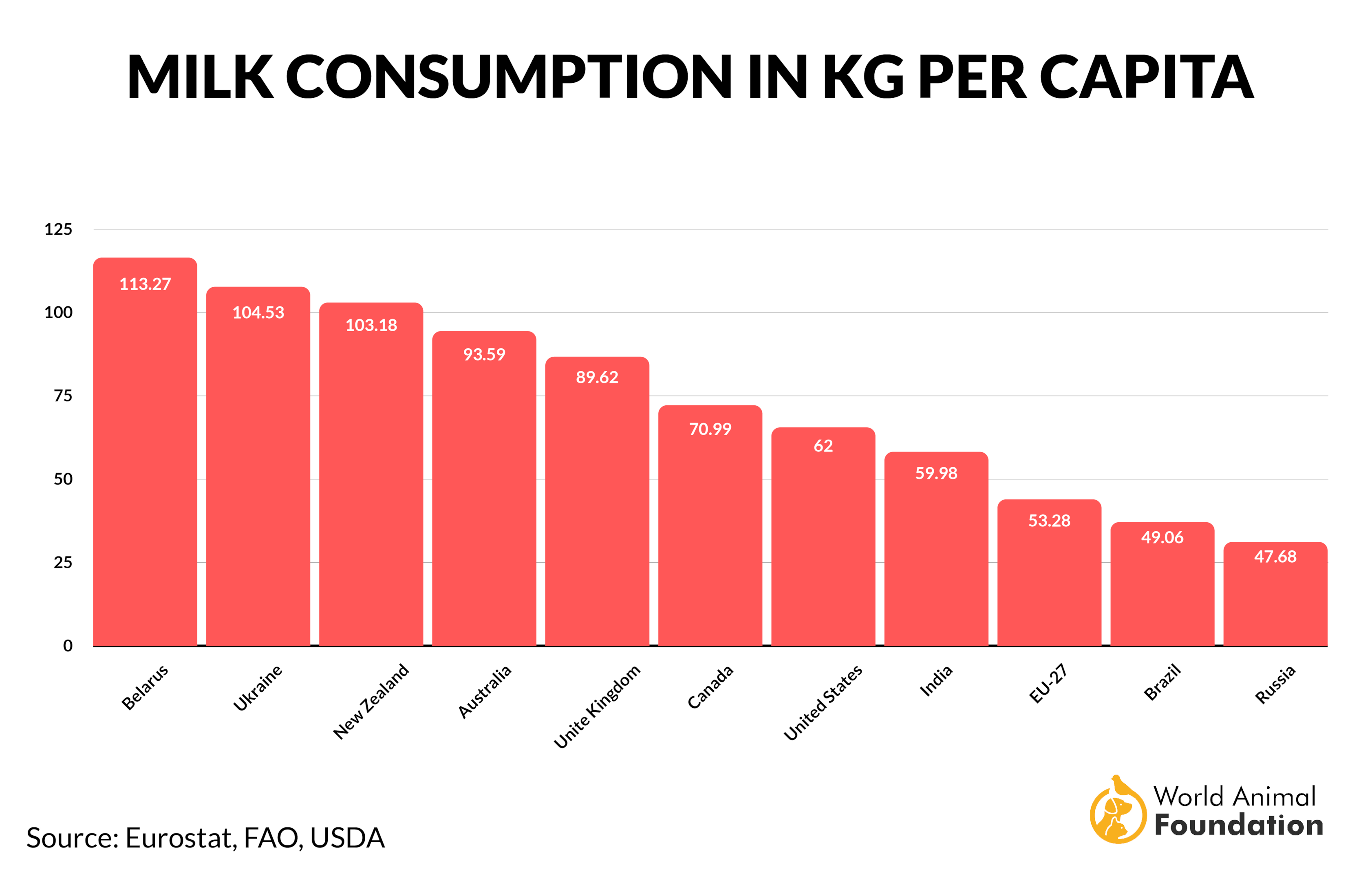
Cruel Molting System Forces Chickens To Lay More Eggs (United Poultry Concerns)
People can stoop pretty low. Most readers have never heard of molting or what it does to a chicken. It’s a process where laying hens undergo a forced deprivation of water and food. This inhumane method lasts one to two weeks to kick-start their egg-laying cycle.
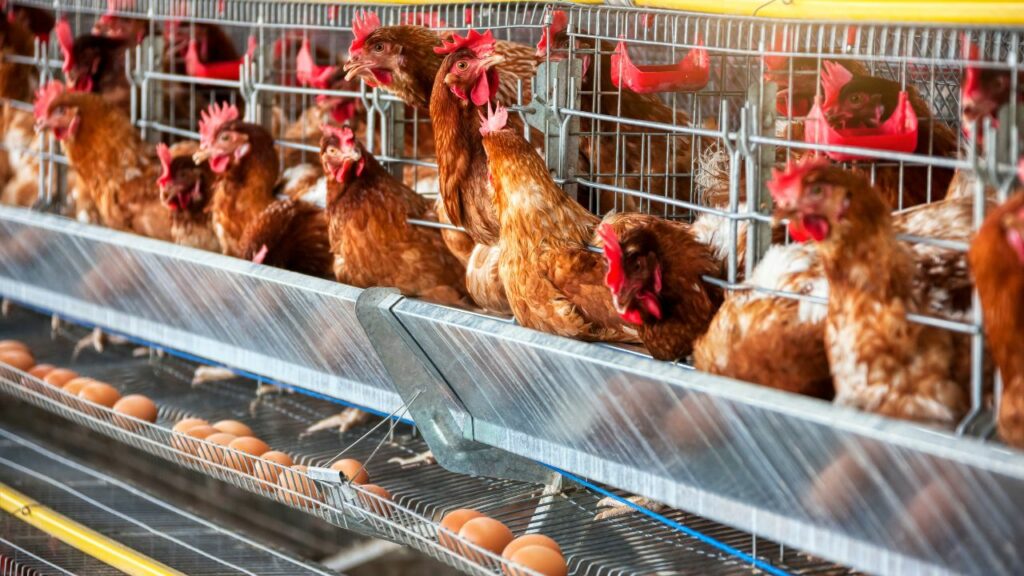
This method allows farmers to keep the hens longer and produce greater production rates for profit. Many hens die.
Farmers Feed Antibiotics to Animals in a Bulk (USDA)
Somewhere in America, dozens of pharmaceutical executives live in fancy mansions because they sell antibiotics to factory farms by truckload. Yet we wonder why more and more antibiotic-resistant strains of infections have devastating effects on people and animals.
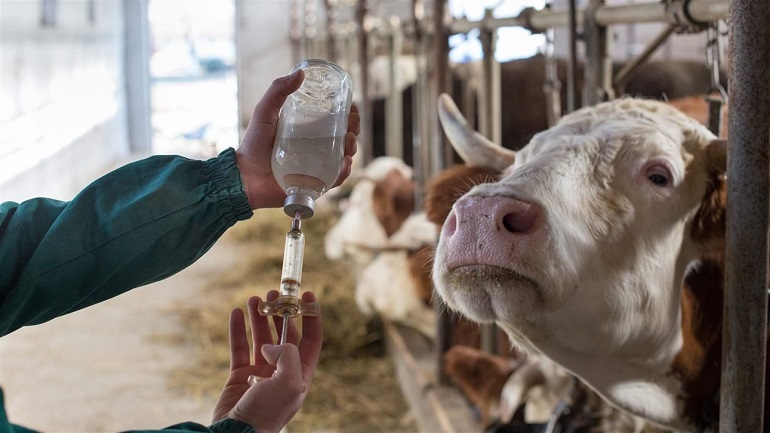
Though the outcry isn’t new, scientists, health experts, and consumers advocate for the safe use of antibiotics on factory farms. Most doctors no longer write prescriptions for antibiotics for people, yet on factory farms in the USA, over-medicating with antibiotics is prolific.
Today’s Chicken Has 220% More Fat Than 1950’s Chicken (Vittana)
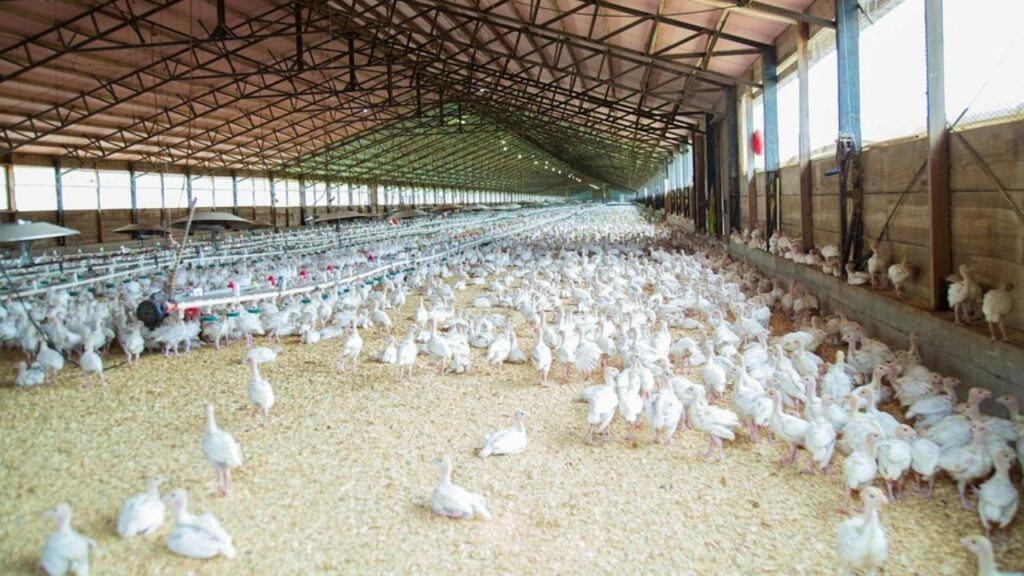
Do you ever look at photographs of the 40s and 50s and wonder how the women were so glamorous and thin? The chicken had 220% less fat, and people ate less.
Sixty years ago, a chicken weighed half of what it does today. This massive increase in size and fat content is due to factory farming and the engineered feed broiler chickens consume.
Animal Cruelty in Factory Farms Statistics
Painful Practices Occurring at Farms Include Debeaking, Tail-Docking, Hot-Iron Branding, etc. (Animal Welfare Institute)
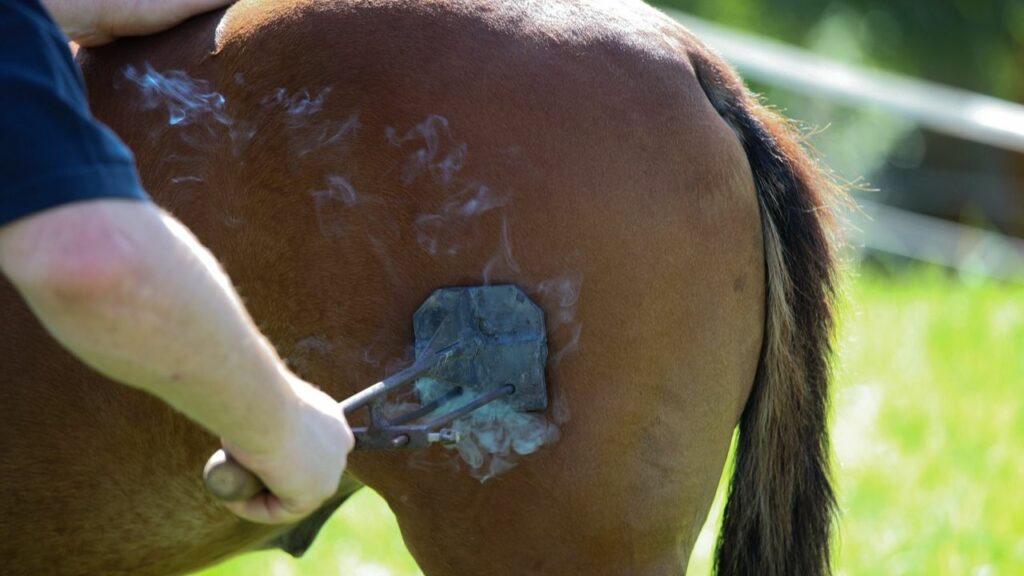
Ah, the scent of burning flesh. Animals that endure these procedures receive no pain relief or anesthetic medication to help them through the painful process. Factory farms treat animals like disposable trash. Inhumane practices are widespread.
After Birth, Piglets Get Their Tails and Testicles Removed and Their Teeth Stapled Without Anesthetic (NCBI)
Who signs up for these jobs? Ever imagine going to the dentist without some pain-numbing medications? Factory farms perform these mutilating tasks on piglets every day without the slightest bit of pity. Since the Animal Welfare Act and the USDA have no jurisdiction over how farm animals are treated, anything goes.
Piglets Slaughtered After 6 Months Only Few See Daylight (PETA)
Wilbur was a lucky pig. Most piglets don’t get a chance to meet the resident animals on the farm. In a natural environment, pigs can live harmoniously with other farm animals between 10-15 years. The real story of a piglet is one of the monsters that includes physical abuse and electric prods up their bum.
One transporter said, “The pigs are packed so tight, their guts pop out their butts.”
Sows Are Impregnated Within 3 Weeks of Giving Birth (The Humane League)
Sows are female pigs who spend their reproductive lives penned into a gestation crate to mass-produce offspring they never get to bond with.
They’re artificially inseminated and move from the restrictive cage to a farrowing pen. Factory farms squeeze out every piglet from a sow before her slaughter. (There must be a special place for humans in hell.)
Male Calves Removed From Mother Cows Within a Day After Birth (National Humane Education Society)
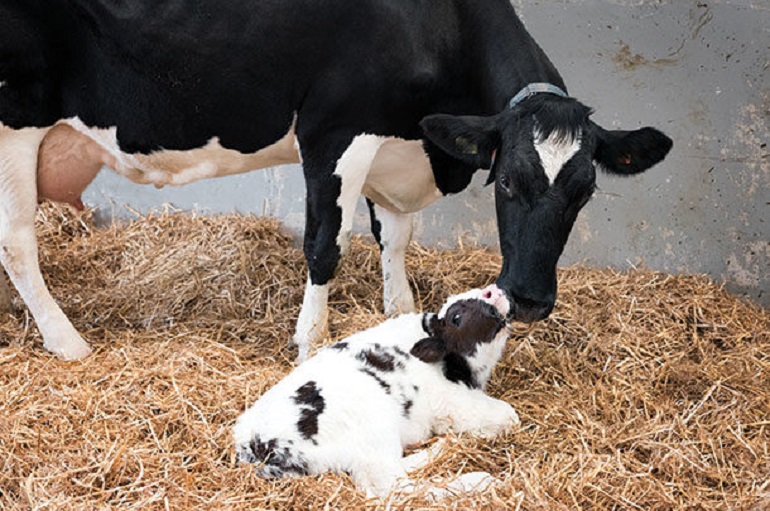
Humans literally milk cows for everything they got. We squeeze every ounce of milk from them, rob them of their babies, and steal their animal instincts. Dairy cows don’t get a chance to bond with their calves.
A study conducted in Vienna proves that cows and calves benefit from the mother and child bond.
The Lifespan of a Dairy Cow Is Around 5 Years (The Humane Society)
Ever thought about a cow? Cows are inquisitive, sometimes stubborn, and docile animals. They have a natural life expectancy of 25 years, given a chance to live in a cattle family. But factory-farmed cows get slaughtered at the age of five. They need access to plant food and social interactions with their cow friends and have a matriarchal culture.
Almost 10% of Factory Farm Chickens Die From Induced Molting (Animal Ethics)
Molting is a vicious effort to get laying hens to produce another egg-laying cycle. And what better way to do that than by starving them for a week or two? Farmers lose 10% of hens because of hunger and dehydration, but the profit is in the hens that live to produce another egg.
Every Minute, 140,000 Chickens Are Slaughtered (Our World in Data)
Globally, people consume more chicken meat than any other meat combined. Over 60 billion broiler chickens make it to our dinner table, cooked in every way possible.
Since most factory chicken farms and slaughterhouses use the latest technology to extract every penny from chicken production, we electrocute 140,000 chickens every minute, which equates to more than 2,000 broilers every second.
The trip from the farm to the automated slaughterhouse is where some chickens first glimpse at the blue sky and have fresh air ruffle their feathers before they die.
Global Factory Farming Statistics
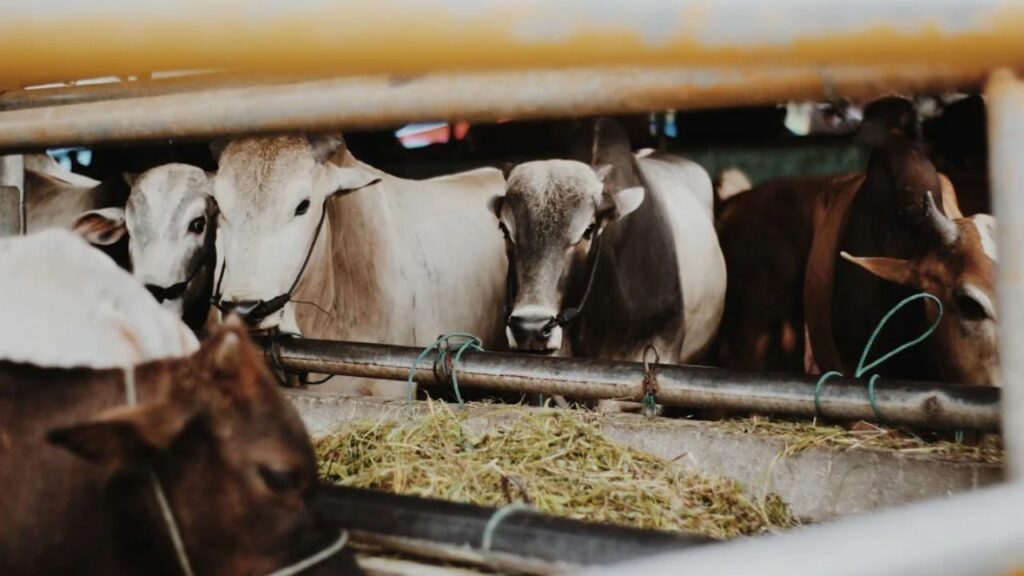
Barren Battery Cages Were Considered Irrelevant in Europe Back in 2012 (Huffington Post)
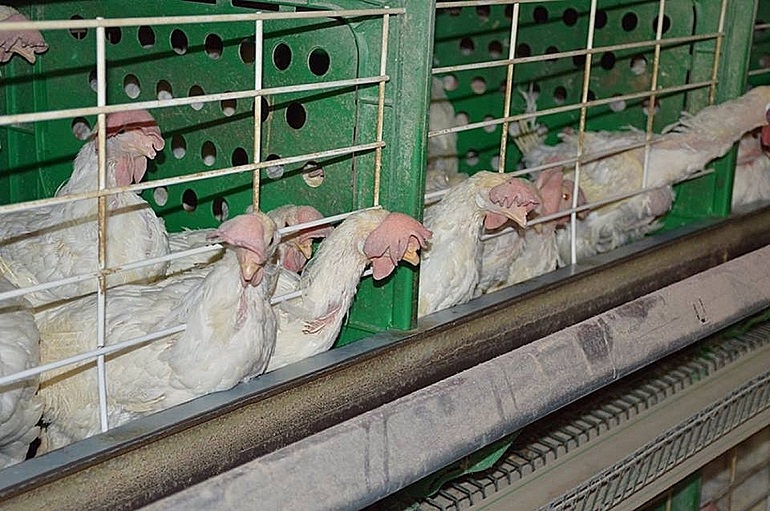
It’s no time to celebrate, though animal activists fought tirelessly for change that banned barren battery (bbc) cages. A bbc is the size of a regular sheet of paper (A4).
A chicken can hardly move or indulge in natural behavior like dust bathing. The new improvement, well, it’s about a postcard size of more space. And the ban is only good on paper.
Researchers investigated many egg farms and found that not much had improved for chickens.
Stats of 2019 Revealed That 60% of Sows Are Placed in Farrowing Crates After Giving Birth in the U.K. (RSPCA)
The U.K. recognized animals as being sentient on April 28, 2022. Further, the U.K. banned sow stalls back in 1999. These stalls are so narrow that the animals can’t move.
However, these cages are permitted for up to four weeks after mating. Farrowing pens have a heat ‘creep’ space that lures the piglets away, so the sows don’t crush them.
Sows remain in farrowing pens from a week before giving birth to after the piglets are weaned (28 days).
Globally, Almost 50 billion Animals Are Bred and Raised on Farms for Consumption Annually (CIWF)
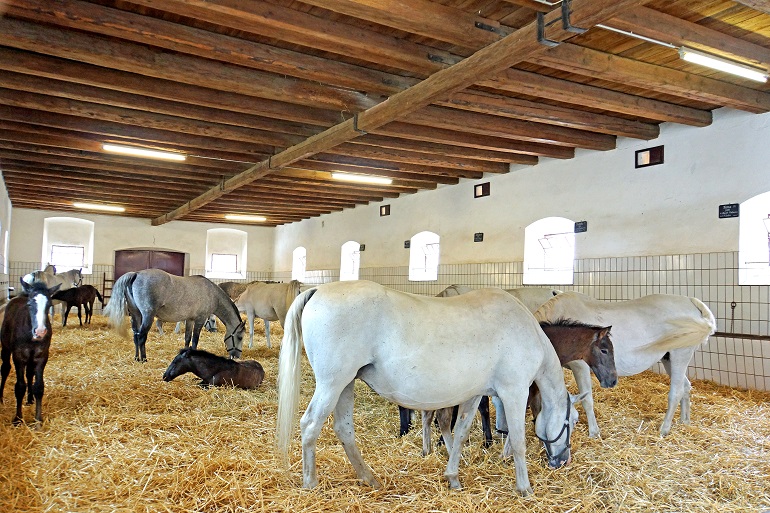
We eat a lot. Factory farms and smaller farms raise 50 billion animals for consumption. If there are about 8 billion of us and 3.1 billion of us can’t buy nutritious food, who is eating it all? Factory farming is all about profit and production. It doesn’t leave room for caring about animals, the environment, and the long-term effects.
To raise and keep 50 billion animals takes immense resources like water, energy, plant-based foods, and chemicals (for land and medications).
Two-Third of Animals Raised for Food Are Factory Farmed Globally (CIWF)
We know that people need to eat. We know that abusing animals in these facilities is atrocious. People fight to legislate laws only to have these factory farms ignore the rules.
They continue to house chickens in barbarous battery cages and dock tails and squeeze animals into the narrowest spaces. We breed them to death to make money.
Almost 800 Mega Farms Are Functional in the UK (The Independent)
And growing. Though MEPs voted to suspend financial support, these 800 mega-farms are growing with their massive carbon footprint. To hide what they do, they house the animals indoors.
Animal Farming Statistics In the U.S.
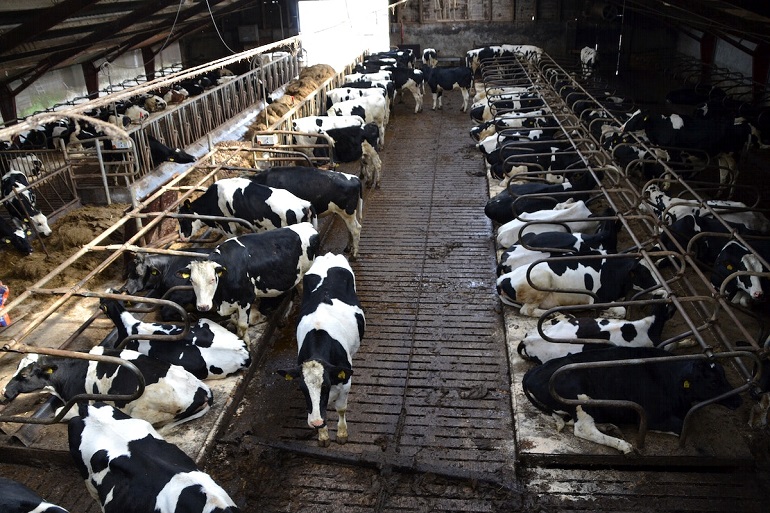
94% of U.S. Citizens Believe Farm Animals Raised for Feed Shouldn’t Be Tortured (ASPCA)
Well, it’s nice to see that people agree on something. We must confront the issue and stop factory farms from mutilating animals and penning them in illegal cages. It’s what animals have been telling us for decades.
99% of Farm Animals Are Raised on Factory Farms in the U.S. (Animal Equality)
Old-fashioned farming is dying. Factory farming has taken over, and 99% of farm animals live on inhumane factory farms that not even the Animal Welfare Act can help.
Of all animal statistics released by USDA, 70.4% of cows, 98.3% of pigs, 99.8% of turkeys, 98.2% of laying hens, and over 99.9% of broiler chickens are raised in factory farms. And what about fish?
According to the USDA Agriculture Census of 2017, Almost 98.2 to 99.9% of Chickens Are Farm Raised (Sentient Institute)
Chicken farmers long ago moved away from free-range farming. The money, efficiency, and demand for products introduced technology to the chicken coop. We squeeze our laying hens into paper-sized battery cages for profit.
From January to October 2020, American Farms Produced 7.61 Billion Broiler Chickens(The Poultry Site)
The USDA recorded that U.S. hatcheries put 224 million eggs into incubators in October 2020, an increase of 2% or 4.5 million hatched chicks. During the same timeframe, hatcheries hatched 3% fewer (177 million) broiler chicks.
Not to worry, it still means that factory farms churned out 7.61 billion broiler chickens.
Animal Agriculture Statistics
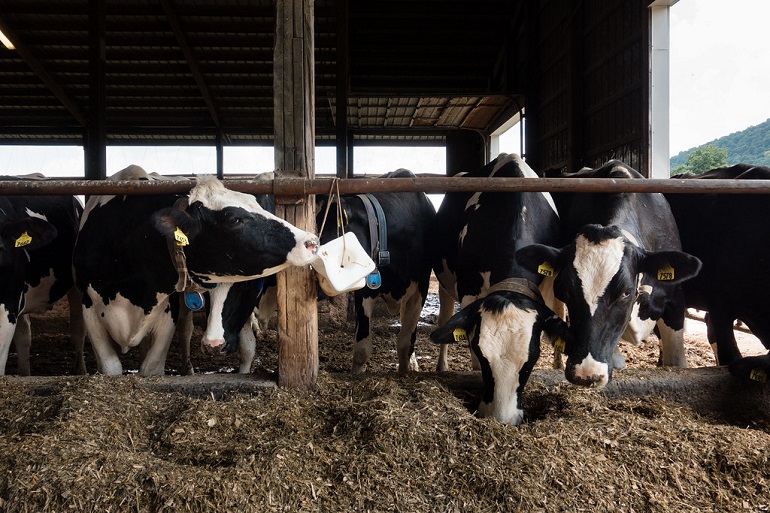
Agriculture is the Biggest Water Waster, According to the EPA (EPA)
Most Europeans and North Americans have access to clean drinking water, though the USA is experiencing more water shortages than ever. Earth has plenty of water, but 96% is salt or saline. Drinking or freshwater is only 3%, with 1% available for use. So why are we wasting it on farms (and other industries)?
American animal factories consume 36 to 74 trillion gallons of water per year.
70% of Consumable Freshwater Is Utilized for Agricultural Purposes, According to Environmental Stats (World Bank)
It’ll be interesting in 2050 when 9 billion people turn on the taps and dust comes out. It won’t be a pretty sight, and another side of humanity will rear its ugly head. The world over, farms consume 70% of freshwater. Remember, we only have 1% to use.
40% of Emissions Due to Agriculture Come From Farming Animals in the U.S. (PBS)
We can blame planes and cars and the oil and gas industry. We know it impacts climate change. Yet agriculture and factory farming are flying under the radar.
Methane from mega cattle, sheep, and goat farms is also responsible for greenhouse gas emissions. There’s talk about reducing global emissions. We’re still failing at repurposing farmland.
Global Warming Statistics

Waste Produced by Farmed Animals Has Polluted 145,000 Miles of Rivers and Streams in the U.S. (Public Interest Network)
It’s not just the USA. Worldwide, 80% of wastewater flows into our ecosystem untreated. Waste comes from corporations, farms, and even individuals who carelessly pollute the environment. Factory farms pollute drinking water from farm runoff. That means urine, blood, and fecal matter enter our drinking water.
The number one freshwater polluter globally is agriculture. Factory farms release 1 billion tons of phosphorus and nitrogen waste every year. Aside from polluting 145,000 miles of rivers, 1 million acres of waterways like lakes, reservoirs, bays, and estuaries also bear the factory farming footprint.
In Maryland and West Virginia, Farming Waste Contributes to Male Fish Developing Ovaries (Peta)
Talk about impacting evolution. Farming waste is so potent in some states that male fish living in rivers near chicken farms are developing ovaries.
Approximately 14,400 Acres of Rainforests Are Cleared for Cattle Farms (PETA)
We move fast. Modern machinery can destroy one acre in six seconds. According to environmental statistics, we’re down to the last 10% of the virgin Amazon rainforest. In the last 50 years, massive swaths of forest were clearcut to make room for industrial livestock farming.
About 260 Million Acres of Deforestation Is Used to Produce Crops for Farm Animals in the U.S. (Peta)
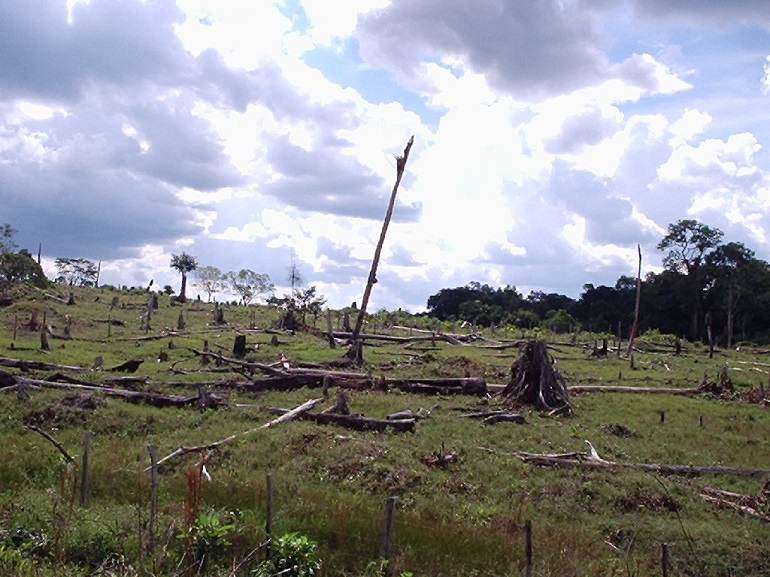
Deforestation is a method that mega-farms use to clear land to grow feed for farm animals that feed the insatiable demand of humans. Grazing also impacts unique vegetation. Many plants are on the brink of extinction.
Farming Cows Produce the Highest Amount of Methane (EPA)
Not news anymore. People have been saying for decades that cows (through no fault of their own) are responsible for 44% of human-caused methane. Enteric fermentation is part of a cow’s digestion.
Learning how many cows are in the world would give a better perspective on this issue.
A Mature Dairy Cow Produces 63.5 Liters of Urine and Feces (16.8) Per Day (Cornell.edu)
No doubt, cows are busy chewing the cud and excreting 16.8 galls of feces and urine every day. Since there are approximately 264 million cows bred for milking alone, that adds up. Cow manure is also poorly stored and handled, which leads to water contamination in rivers and aquifers.
FAQ’s
How Many Factory Farms Are There, and Which Country Has the Highest Number of Factory Farms?
Globally, about two million factory farms raise about 9.32 billion animals. In the USA, 99% of all farmed animals live on factory farms. China is the world’s largest meat producer, and the U.S. comes second.
Is Factory Farming Bad for the Environment?
Yes. It influences climate change, pollutes the environment, releases greenhouse gases, and destroys animal habitats.
How Does Factory Farming Affect People?
Farming releases animal waste into the air and water streams. Over 400 harmful gasses, including heavy metals like zinc, come from factory farms. Also, animals receive 80% of all antibiotics and hormones, which indirectly end up in our food.
What Happens in Factory Farms?
Billions of animals are treated inhumanely to grow quickly and generate profit.
What Are the Associated Farm Benefits?
It keeps prices low for buyers, automation moves food quickly to the consumer and improves productivity. There are zero benefits to the animals.
How Does Factory Farming Kill Animals?
Most of the slaughtering process is automated. Many animals are either gassed, electrocuted, and/or cut with a knife.
Should Factory Farming Be Banned?
Yes. It’s immensely cruel to animals and bad for the environment.
Is Factory Farming Meat Unhealthy for Human Consumption?
It’s full of bacterial pathogens like E.coli, Salmonella, antibiotics, and hormones and contains the stress the animal endured during its entire life.
Wrap Up
Researching factory farming statistics is incredibly painful, humbling, and eye-opening. As people, we’re constantly looking for solutions to problems. You’ll see a very simple solution if you think long and hard about it.
The answer isn’t about creating more rules and regulations. It’s about you. You are the solution. You can make a difference, choose plant-based alternatives and stop factory farming, and protect farm animals.


